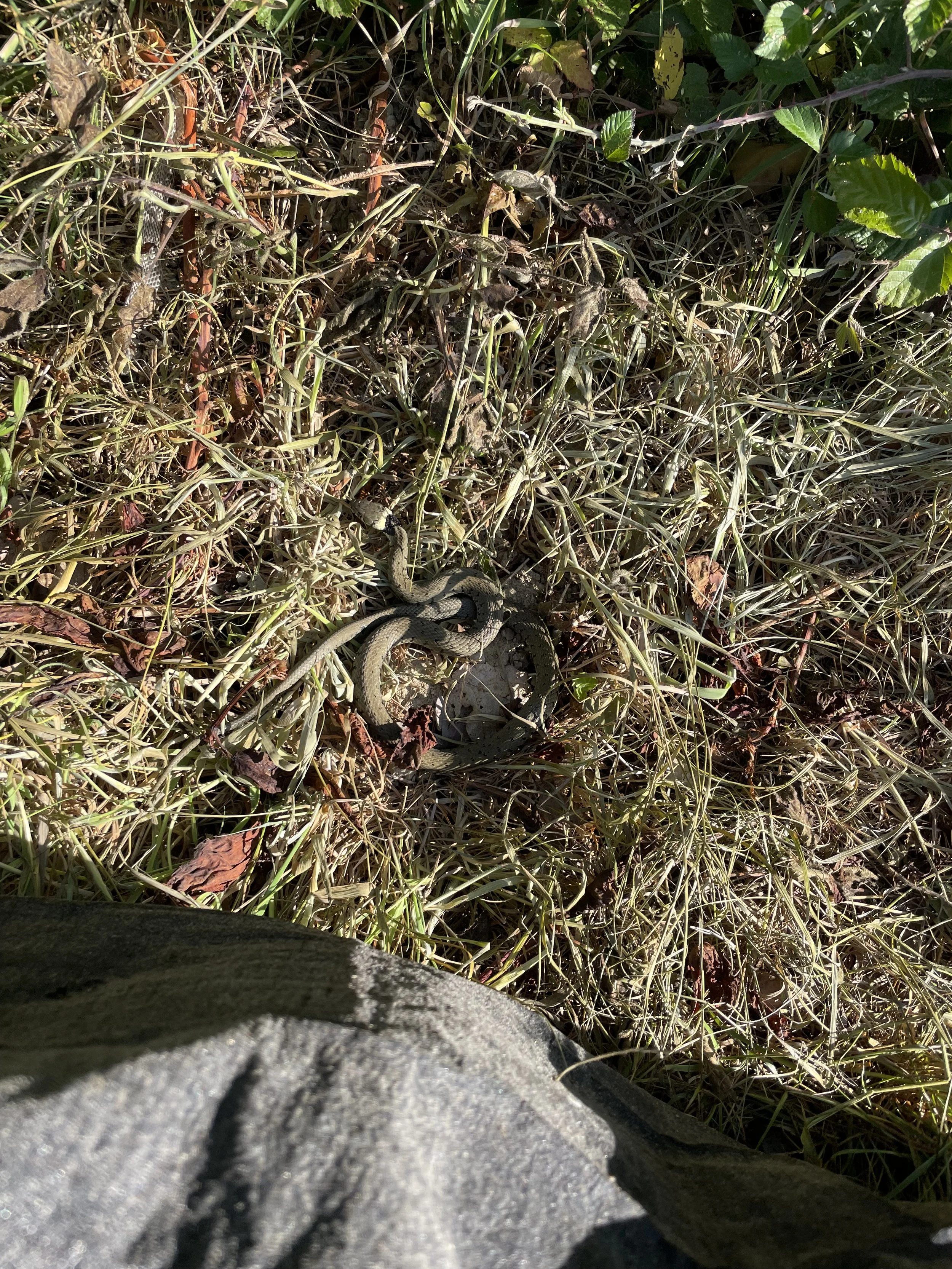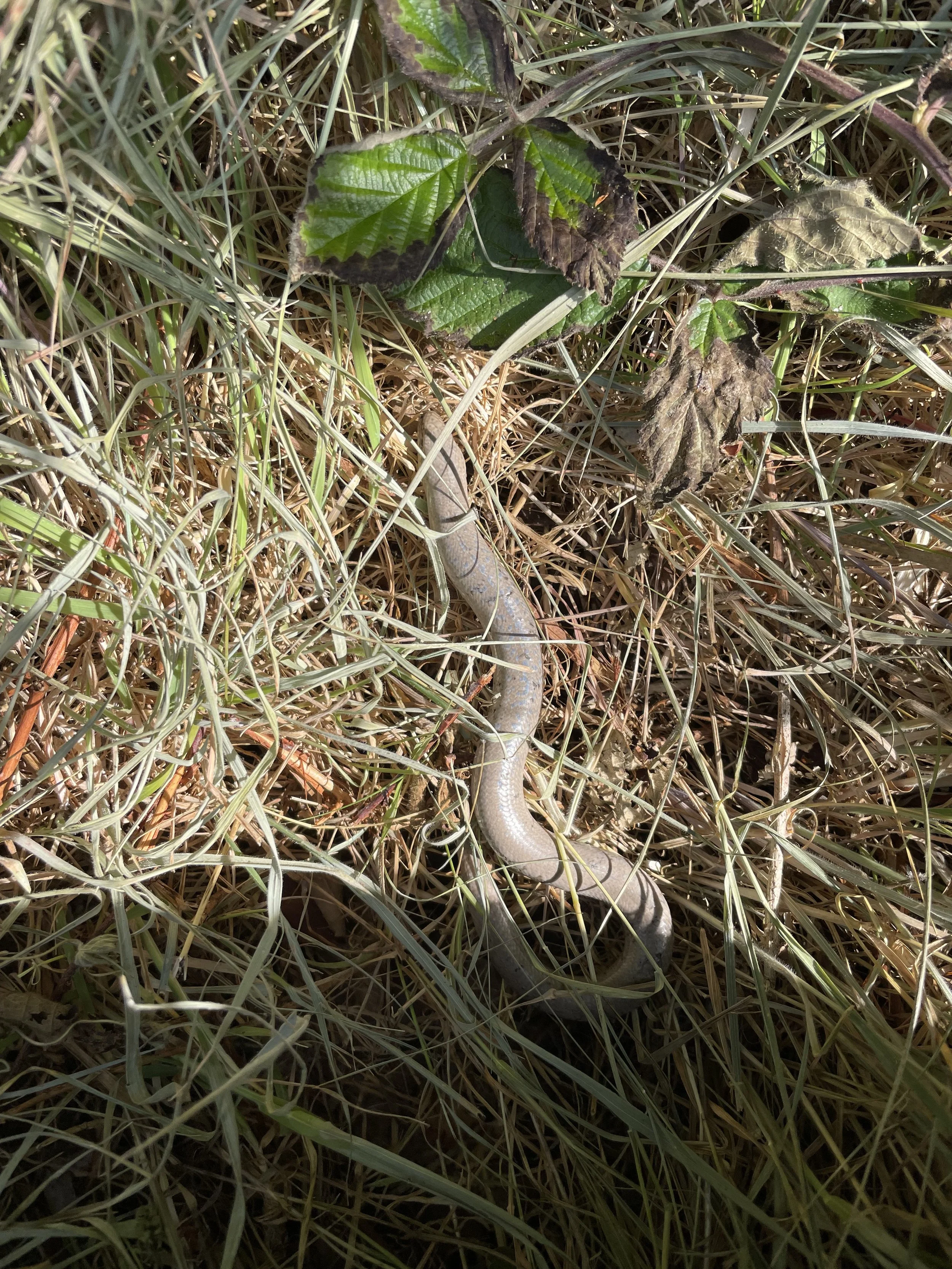Field Notes from a Placement Year: Reptile Encounters
We're delighted to welcome Ellie, a BSc Conservation Biology and Ecology student from the University of Exeter, to The Ecology Co-op as part of her university placement year. Over the next six months Ellie will be gaining hands-on experience across a wide range of surveys and technical work, joining our ecologists in the field and behind the scenes. As part of her time with us, Ellie will be sharing monthly reflections in this blog series “Field Notes from a Placement Year'“ offering a student’s perspective on the world of ecological consultancy.
The longest day of the year marks us being fully in the swing of things of survey season at The Ecology Co-op. June has been packed with a busy schedule of reptile and bat surveys providing some great opportunities to see so many species up close.
Things learnt
I have spent many mornings this month undertaking reptile surveys. After a Preliminary Ecological Assessment (PEA) a site may be assessed to contain suitable habitat for any of our six UK reptile species, this includes the grass snake, adder, slow worm, common lizard, sand lizard, and smooth snake. Sites with lots of vegetative cover such as long grasses and tussocky areas, refugia covering the ground (such as pieces of wood and scrap metal), areas that catch the sun, and sites with good connectivity to other potentially suitable habitat (often railways provide corridors of habitat) can be likely to support reptiles. Surveys therefore must be undertaken to determine the likely presence of species on site as this is important to inform potential planning and mitigation during construction.
The survey technique involves deploying reptile mats (made of bitumen, corrugated metal, and carpet tiles) which after a few weeks ‘bed in’ to the ground to create great refugia habitat for reptiles. My task is to carry out at least seven checks during suitable conditions, a mixture of mornings and afternoons where the air temperatures are between 9-18 degrees celsius. Due to being ectotherms, reptiles rely on external heat sources (the sun) to regulate their body temperature, therefore these temperatures provide the greatest opportunity to see reptiles that are out adjusting their body temperatures by utilising the refugia.
Monthly highlights
I have been really enjoying these reptile surveys as it has given me a great opportunity to see reptiles and identify them, and in my surveys so far I have found numerous grass snakes and slow worms. Grass snakes can be distinguished from an adder through their characteristic yellow/white and black striped band below their head, whereas adders generally display a diamond zig-zag pattern down their body. Male and female slow worms can often be distinguished apart since females characteristically have a dark black stripe running along their body, while males are often lighter in colour and can have blue spots. Getting to see so many individuals has been really valuable to learn identification and their ecology, as although I have seen slow worms previously, it is not common to see them in this abundance.



